AUBURN — Scott Williams, executive director of Lake Stewards of Maine, a nonprofit that trains volunteers to monitor water quality across the state, had just got off a technical support call Thursday with about 40 “citizen lake scientists.”
The subject was keeping tabs on “ice-in” dates — the point at which a lake or water body first freezes over.
“Virtually everyone in the group said this has been a really unusual year,” he said. “The ice has gone in and then come out, it’s come in, and then gone out again.”
On Wednesday, rescue crews pulled an Oxford man out of Thompson Lake, after he fell through the ice while skating. Maine Game Warden Harry Wiegman, who took part in the rescue, said, “Even though temperatures have been colder recently, ice conditions on this lake and others in the area remain very inconsistent and dangerous.”
“Only in the last few days has the ice come back in, and looks like it could stay, but it’s late,” Williams said.
Tom Hawley, meteorologist at the National Weather Service office in Gray, said January has been unseasonably warm.
If January ended Thursday, he said, it would be the second warmest January on record with an average temperature of 31.2 degrees. The warmest January through the 20th was in 2007 at 31.6 degrees.
January 2021 has also had the warmest average low temperature at 24.5 degrees.
“We have not had a day in January so far that has been below normal,” he said.
Lake Stewards of Maine’s Center for Citizen Lake Science has a training center for volunteer lake monitors on the north shore of Lake Auburn, where there are still large areas of open water.
Williams said in recent years, there has been heightened focus on ice-in and ice-out in lakes due to its impact on water quality.
“The duration of ice cover on a lake has a really strong bearing on the health of the lake,” he said. “Our lakes here in Maine are pretty clear and clean in no small part because of our cold climate and the fact that they are covered with ice for several months of the year.”
With the lake freezing later, it is adding to the length of time the water is exposed to sunlight.
The lake monitors have a fair amount of historical data on ice-out, but not ice-in, he said. Now that’s changing as climate change becomes an increasing concern, and Lake Stewards of Maine is encouraging its volunteers to track it.
The organization keeps near real-time ice-in and ice-out data on its website.
As of Thursday, Thompson Lake in Oxford did not have an “ice-in” tag, but several surrounding water bodies, including Pleasant Lake in Otisfield and Tripp Pond in Poland did.
Erica Kidd, watershed manager for the Auburn Water District, said Lake Auburn is “typically frozen by now,” but it’s not uncommon to have a few open spots.
Professor Holly Ewing of Bates College in Lewiston, who has studied the lake and its recent bouts of algae, has said that recent ice-out dates have typically been earlier in the spring than when they used to be.
Williams said it’s “extremely late” for Lake Auburn, in his experience.
“Looking back at the last decade or so, we’ve seen more of this late ice-in trend taking place,” he said, due to lakes becoming warmer during the summer.
This past summer broke temperature records in the state, he said, including in Portland. Through data collected by the Lake Stewards of Maine, by mid-July 2020 the surface water temperature at many Maine lakes was in the mid-80s.
“That is extremely unusual,” he said, adding that average temperatures for that time of year are the mid-70s.
Williams urged caution for those heading out on lakes, saying ice thickness is rarely uniform across a lake.
“I would urge anyone going out on a lake or a pond to be very, very careful, make every effort to determine how thick the ice is, and not make the assumption that the ice is going to be that thick throughout,” he said.
The state recommends keeping off any ice that is not at least 4 inches thick. It’s recommended that snowmobiles need at least 5 to 6 inches, and cars and small trucks need 8 to 12.
Send questions/comments to the editors.


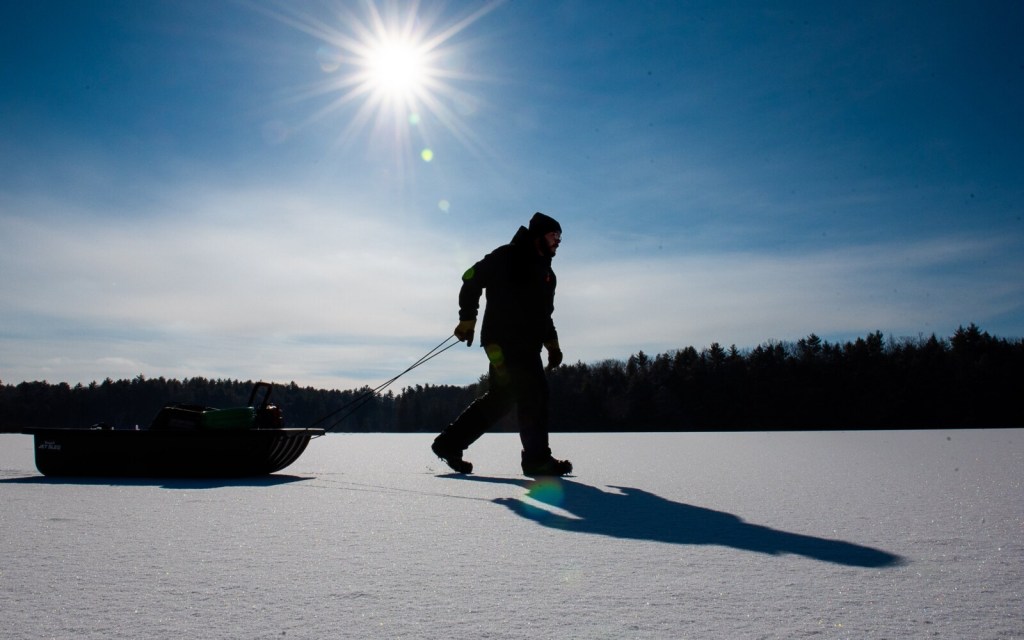
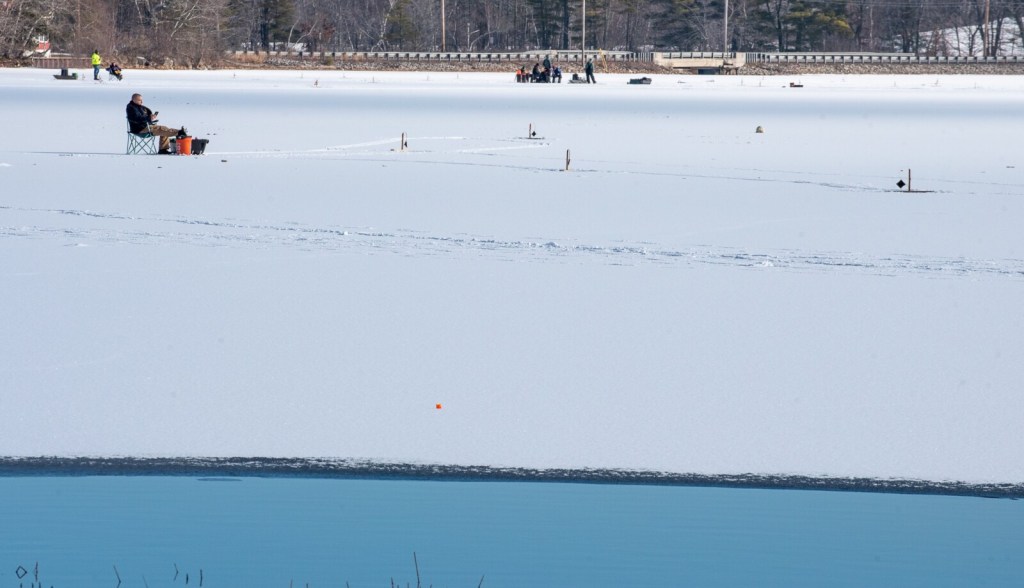
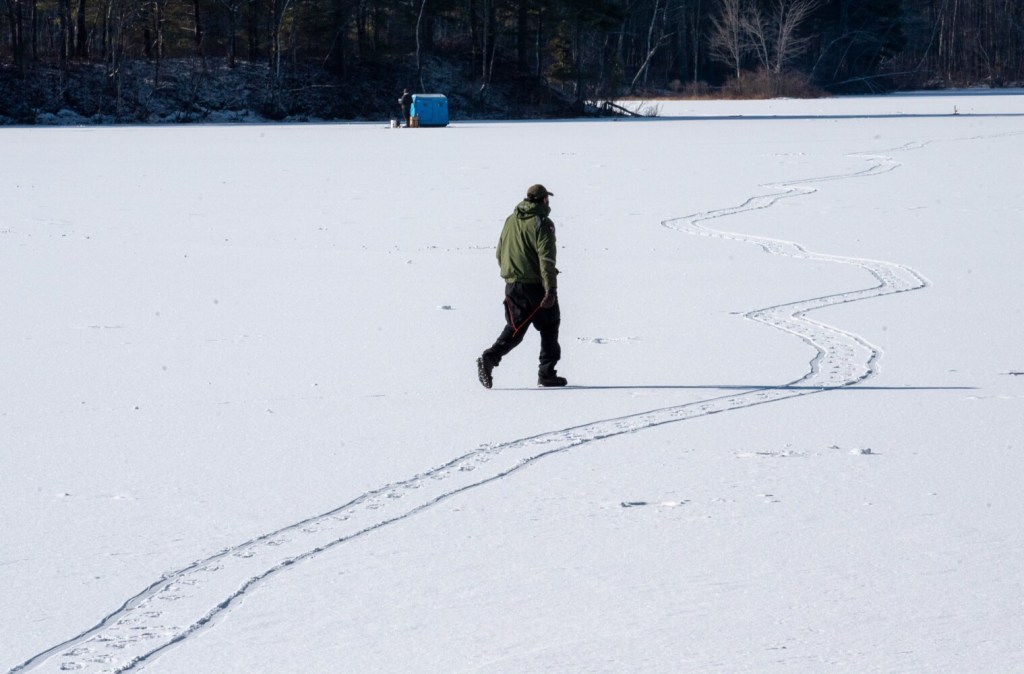
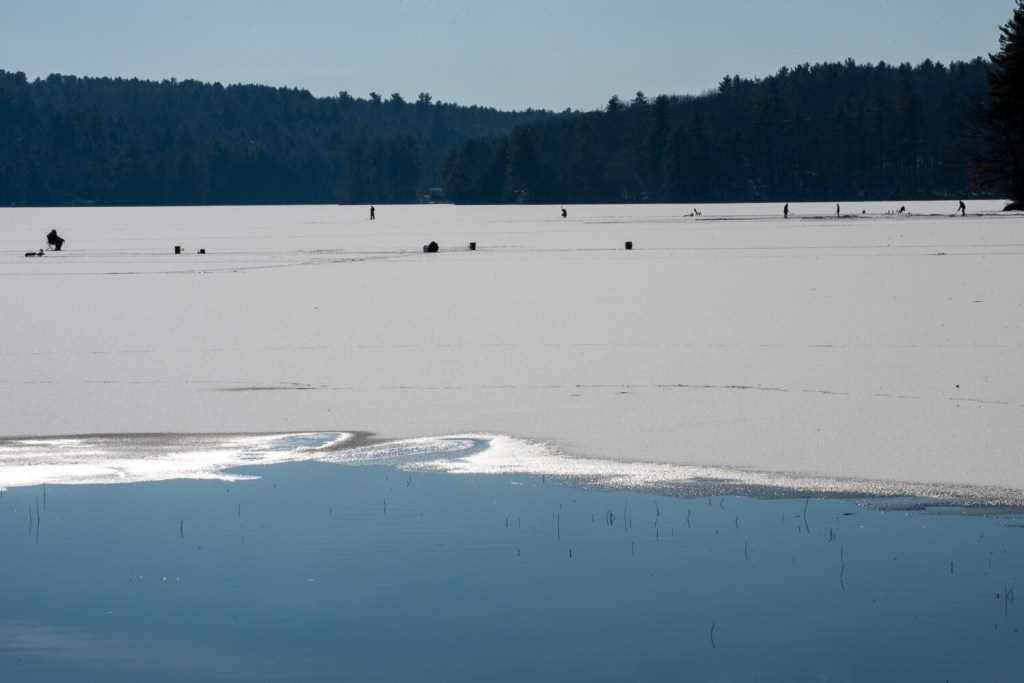

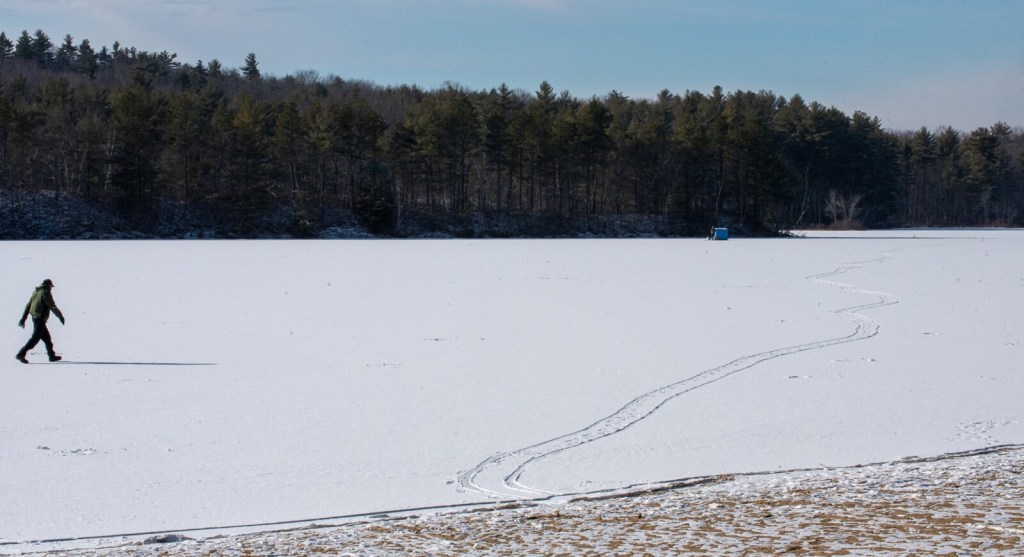

Success. Please wait for the page to reload. If the page does not reload within 5 seconds, please refresh the page.
Enter your email and password to access comments.
Hi, to comment on stories you must . This profile is in addition to your subscription and website login.
Already have a commenting profile? .
Invalid username/password.
Please check your email to confirm and complete your registration.
Only subscribers are eligible to post comments. Please subscribe or login first for digital access. Here’s why.
Use the form below to reset your password. When you've submitted your account email, we will send an email with a reset code.